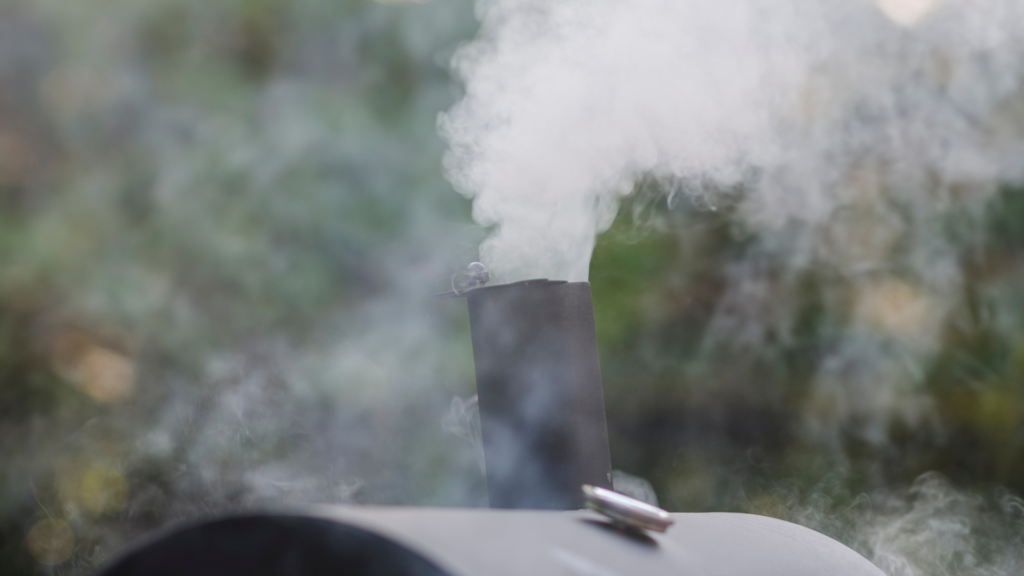Smoke Signals: A Beginner’s Guide to Mastering the Art of Smoking Meats
Welcome to the flavourful world of smoking meats, a journey that transforms simple cuts into succulent, smoky delights. This beginner’s guide is your roadmap to mastering the ancient art of smoking, breaking down the process into simple, manageable steps. Whether you’re dreaming of tender brisket or succulent ribs, we’ve got you covered.

1. Choosing Your Smoker
The first step to smoking meats is selecting the right smoker for your needs. Smokers come in various types, including electric, gas, charcoal, and wood pellets. Each type has its advantages:
Electric smokers are perfect for beginners due to their ease of use and precise temperature control.
Gas smokers offer convenience and are easy to maintain, making them another great option for novices.
Charcoal smokers appeal to those seeking the traditional smoking experience, providing a deeper smoke flavour.
Wood pellet smokers combine the ease of electric smokers with the authentic smoke flavour of wood, making them a popular choice for enthusiasts.
2. Understanding Wood Flavours in Smoking Meats
The type of wood you use significantly affects the flavour of your smoked meats. Woods are typically classified into mild, medium, and strong flavours:
Mild woods like apple and cherry impart a sweet, fruity flavour, ideal for chicken and fish.

Medium woods such as hickory and oak offer a more balanced smoke, perfect for pork and ribs.
Strong woods like mesquite provide a robust flavour, best suited for beef and game meats. To explore the wide range of wood flavours and their best uses, check out Weber’s Guide to Smoking Woods. But experiment with different woods to find your preferred flavour profiles.
3. Mastering Temperature Control
Temperature control is crucial in smoking meats. Maintaining a consistent temperature ensures even cooking and optimal smoke flavour. Here are key tips:
Use a Reliable Thermometer: The first step towards mastery of temperature control is to employ a thermometer. Not just any thermometer, but one that’s known for its accuracy and durability. A digital probe thermometer is a great choice as it allows you to monitor the smoker’s internal temperature without having to open the lid frequently. This way, you keep the heat stable and the smoke dense around your meat for that perfect cook.
Adjust vents to control airflow and temperature. Open vents to increase temperature and close them to reduce it. Aim for a slow and low cooking process, typically between 225°F and 275°F, depending on the meat.

4. Smoking Popular Meats
Brisket: The key to a perfect brisket lies in its preparation. Start by selecting a brisket with a good amount of marbling and a thick fat cap. Trim the fat cap to about 1/4-inch thick to ensure even cooking and smoke penetration. Season your brisket with a simple but effective rub, typically a mixture of salt, black pepper, garlic powder, and onion powder. This allows the natural flavour of the meat to shine.
Smoking its fat side up at a low and slow temperature of 225°F allows the fat to render slowly, basting the meat throughout the cooking process. This method takes patience, roughly 1 hour per pound of meat, but the result is a tender, flavorful brisket with a beautiful smoke ring. The target internal temperature of 195°F to 205°F is crucial for breaking down the connective tissues, resulting in melt-in-your-mouth tenderness.
Ribs: The secret to great ribs is in the preparation. Removing the membrane on the back of the ribs ensures that smoke and seasoning can penetrate the meat fully. Apply a dry rub generously for maximum flavour. The 3-2-1 method is a tried-and-true technique for smoking ribs: smoking unwrapped for 3 hours allows the meat to absorb smoke and develop flavour, wrapping in foil with a bit of liquid (like apple juice, beer, or even cola) for 2 hours cooks them to tenderness, and finishing unwrapped for the last hour lets the outside caramelise and form a delicious bark. It’s a foolproof method for both baby back and spare ribs, resulting in fall-off-the-bone tenderness and a rich, complex flavour profile.
5. Achieving the Perfect Smoke Ring and Crust

The smoke ring, a pink layer under the meat’s surface, and a well-formed crust, or “bark,” are hallmarks of expertly smoked meats. To achieve these:
Ensure proper airflow in your smoker for a good smoke ring.
Use a rub with sugar for a caramelised crust but be mindful of burning at higher temperatures. Spritzing your meat with apple cider vinegar or juice can enhance the bark and prevent drying.
Conclusion
Smoking meats is an art that requires patience, practice, and passion. By following this guide, you’re well on your way to becoming a confident meat smoker. Remember, each smoking session is a learning experience. Don’t be afraid to experiment with different woods, temperatures, and meats. For those interested in experiencing the pinnacle of smoked meats without the wait, explore our BBQ meats, meticulously prepared from scratch on our premises, where simplicity meets excellence. Learn more about our approach and offerings here [‘Discover Our BBQ Mastery’].

